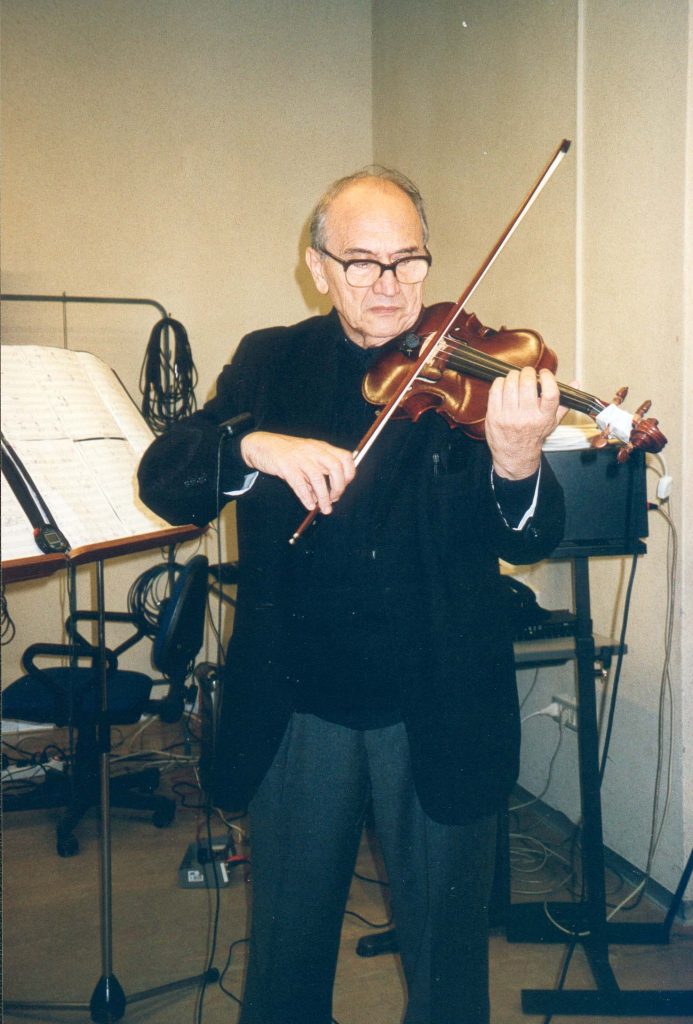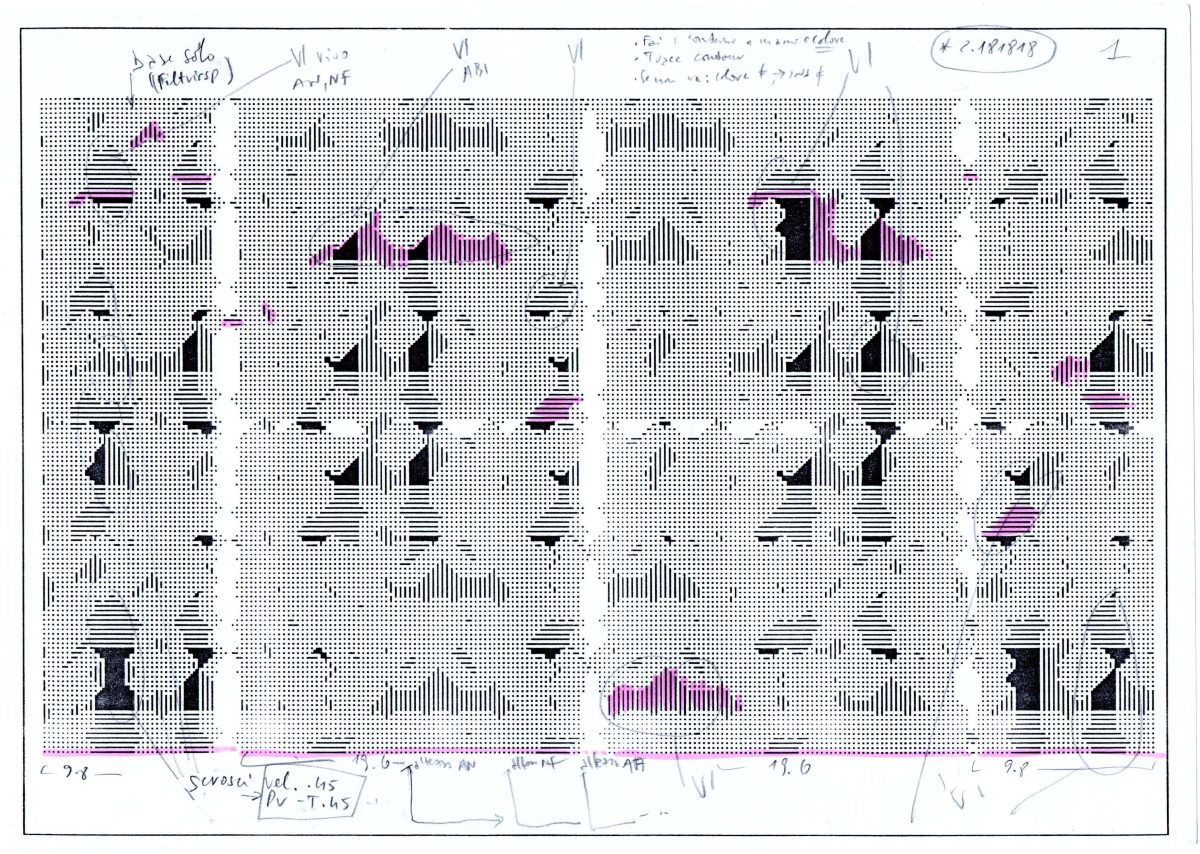(1999) for violin, rainsticks, electronics and interactive system [12’ 30”]
Premiered at Auditorium Montale at the Teatro Carlo Felice, Genova, May 11th 1999
Violin: Marco Rogliano
Sound projection: Roberto Doati, Alvise Vidolin
Interactive system: Antonio Camurri, Matteo Ricchetti
Realized with a Fellowship from Bogliasco Foundation, Centro Ligure per le Arti e le Lettere
The work has been realised during a residence at the Fondazione Bogliasco thanks to a Fellowship from the Liguria Study Centre for the Arts and Humanities. The idea of the work arises from the admiration of certain monochromatic paintings where, according to different matters and techniques, successive paint’s layers give rise to a surface that make “disappear” the raw material. They can be perceived as sculptures or as comprising different changing shades, depending on the light incidence on the colour.
I am struck by the little perceptual bursts due to a strong abstraction.
As in other works of mine, I started here with sound materials that include both concrète [earthly] and abstract [heavenly] elements. I have tried to realise the idea of a monochromatic surface electronically transforming the impulsive sounds of two palo de lluvia (rainsticks), a popular instrument of the South American Indian cultures. It is this granular monochrome that constitutes the whole electronic part. The violin is just playing harmonics that sometimes, through original bow techniques, tend to dive into the electronic surface. Another tools for the development of “natural” (what’s natural here?) and artificial dimensions is the violin double equalization: the first one to emphasise the original acoustics, the second one to electrify it. During the performance the mixing of the two and its action time are left free to the sound engineer.
The interactive system (ad libitum) settles the relationship between violin gestures and electronic part. The movements of the left hand along the neck and the incidence angle of the bow on the strings are kept by one microled and a bracelet, and through an appropriate MIDI mapping, will control the sound projection of the electronic part on a eight loudspeakers system. Furthermore the weight distribution of the violinist body over two pressure sensible footboards will determine the dynamics of the electronic part.

The Laboratory of Musical Informatics, DIST (University of Genova) at the Fondazione Teatro Carlo Felice has realised the interactive system for the first performance, particularly by Antonio Camurri e Matteo Ricchetti. I am deeply grateful to them and to my “same old” Maestro Alvise Vidolin who realised the MAX patches for the mapping controls. Thanks to Xavier Serra for his SMS program and Davide Rocchesso for his BaBo program: together with Csound I used them for the transformations of rainsticks. From the formal point of view the work follows 12 within 63 computer-generated drawings I received as a present from my very friend Gianni Revello. Some of these drawings have been submitted to the GraphSco program by Riccardo Bianchini for the extraction of musical parameters both for violin and electronic part.
«It is noise a music that does not paint anything». If this is not noise, it is thanks to the violin colours and the precise brushstrokes of Marco Rogliano: without his expert guide I could have not write this piece.
I am finally indebted to Franco Avicolli, poet of abstract lands to whom I owe the discovery of pouring sounds and lasting friendships in Argentina. I wish to dedicate to him bastone armonico.

